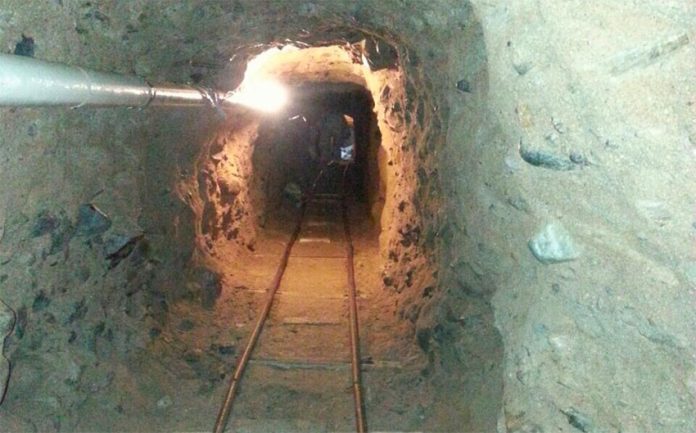Former Sinaloa Cartel leader Joaquín “El Chapo” Guzmán may be out of the picture but his tunnel-building legacy lives on.
The U.S. Drug Enforcement Administration (DEA) reports that tunnels are still commonly used for drug smuggling in the primary border towns in which the cartel operates, such as Tijuana, Mexicali and Nogales.
The most recent tunnel discovery was made by the U.S. Customs and Border Patrol (CBP) on December 19. It crossed the border from Nogales, Sonora, into Río Rico, Arizona.
The U.S. government named it Tunnel 125, the number being the running count of functioning tunnels discovered since 1990. Another 119 unfinished tunnels have also been discovered since then.
In the three years since El Chapo’s arrest, U.S. border forces have found 35 passageways, primarily in Baja California and Sonora, the route the Sinaloa Cartel has used since the 1990s.
All the tunnels discovered in Mexicali, Tijuana and Tecate had lighting, ventilation, electric elevators and steel rails for the carts used to move drugs.
Discovered in April 2016, the longest tunnel seized so far ran 800 meters from Tijuana to San Diego, according to California officials.
Nogales is considered the cradle of drug tunnels, as U.S. border forces discover an average of one per month there, either in use or under construction.
On August 23, 2018, a tunnel task force operated by U.S. Immigration and Customs Enforcement (ICE) discovered a tunnel running from a fast food restaurant in Arizona to a house in San Luis Río Colorado, Sonora. The owner of the property was arrested for possession of US $1 million worth of methamphetamines, cocaine, heroin and fentanyl.
U.S. Army engineers will design technology to detect tunnels this coming year and the U.S. Congress has approved the $2 million the Department of Homeland Security (DHS) requested for the project.
In a speech to the U.S. Senate in April, Homeland Security Investigations (HSI) special agent Timothy J. Tubbs said the corrupting ability of the cartels is extensive and has its tentacles in both countries.
He said the primary drug-running organizations are the of Sinaloa, Jalisco New Generation and Zetas cartels, whose sourcing operations extend as far as Asia.
Tubbs said that DHS deployed 1,700 special agents and 180 intelligence research specialists on the U.S.-Mexico border in response to the smuggling.
In 2018 HSI investigations led to 4,562 criminal arrests, 3,523 indictments, 3,173 convictions and 153 administrative immigration arrests.
Tubbs praised the collaborative relationship between the two countries in its ability to take down targets such as “El Chapo” Guzmán.
“Mexico has proven to be an outstanding partner in the fight against [transnational criminal organizations], taking down the cartels’ top leadership and helping in efforts to dismantle these organizations,” he said.
Tunnel master Guzmán, whose most famous project was the 1.5-kilometer tunnel that led him to freedom from the Altiplano penitentiary in México state in 2015, is serving a life sentence after being convicted in July on drug, murder and money laundering charges.
Sources: Milenio (sp)
